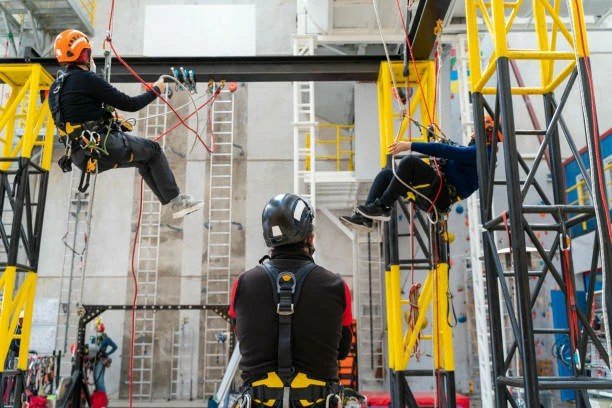Mastering Communication for Enhanced Safety in Working at Heights
In high-risk work environments, particularly when working at heights, effective communication is more than just a critical skill; it is a fundamental necessity that can save lives. Effective communication helps to align the goals of safety managers, workers, and supervisors, ultimately leading to a safer workplace.
The Importance of Communication in Working at Heights
Communication plays a vital role in accident prevention. When people are working at heights, a miscommunication or lack of clarity can have dire consequences.
- Clear Instructions: Clear and concise instructions ensure that all workers understand their tasks, responsibilities, and the safety measures they must adhere to.
- Team Coordination: Teamwork is essential for ensuring that tasks are executed safely and efficiently. Poor coordination can lead to errors that may result in falls or accidents.
- Emergency Signaling: Quickly and effectively communicating in emergencies can make a significant difference in outcomes.
Understanding the Role of Clear Instructions
Clear verbal and non-verbal communication can minimize the risk of accidents in high-altitude work environments. Here’s how:
- Pre-Task Briefing: Conducting thorough briefings before commencing any task helps everyone understand the plan, procedures, and hazards involved.
- Standardized Hand Signals: In noisy environments, hand signals can be a reliable way to communicate critical instructions, especially when working at heights.
The Power of Teamwork in Safety
When teams communicate effectively and collaborate, they create a culture of safety that greatly enhances working conditions:
- Continuous Feedback: Encouraging team members to speak up about safety concerns fosters an environment where everyone is responsible for safety.
- Regular Safety Meetings: Frequent discussions about safety protocols keep everyone aligned and aware of any changes in procedures.
Emergency Signaling: A Lifesaving Communication Tool
In emergencies, clear communication can be the difference between life and death. Implementing proper emergency signaling protocols is crucial:
- This could include:
- Standardized emergency signals that everyone understands.
- Communication devices, such as radios, to facilitate immediate response.
Best Practices for Enhancing Communication in Working at Heights
To ensure that all team members are aligned on safety measures, consider these best practices:
- Invest in Working at Heights Training: Providing comprehensive training ensures all workers understand safety protocols. Look for programs offering Working at Heights Training and Working at Heights Certification.
- Utilize Technology: Communication apps and tools tailored for construction environments can streamline updates and alerts.
- Regular Drills: Conducting mock drills helps prepare your team for real emergencies and reinforces the importance of communication.
Conclusion
Effective communication is a cornerstone of safety when working at heights. By embracing clear instructions, fostering teamwork, and establishing robust emergency signaling, organizations can significantly reduce the risk of accidents. Invest in Working at Heights Course Online to help your team communicate better and work together safely.
If you have questions or would like to discuss safety training opportunities, please reach out to us at [email protected].



 349,500 Offered Certificates
349,500 Offered Certificates
 24/7 Online Training
24/7 Online Training
 Money Back Guarantee
Money Back Guarantee
 Fully Accredited Courses
Fully Accredited Courses
